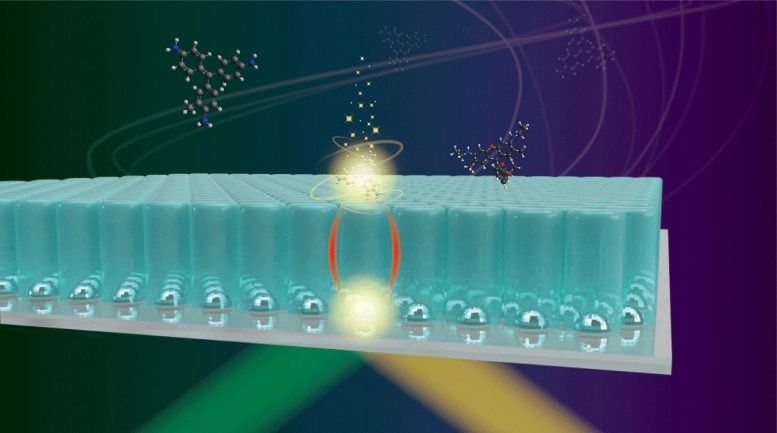

Researchers at Osaka University have developed a new method for enhancing fluorescence and Raman spectroscopy signals using a dense random array of silver nanoislands and a protective silica layer.
This breakthrough significantly amplifies the detection capabilities without damaging the cells, offering potential applications in environmental monitoring and medical diagnostics.
Advanced Spectroscopy Techniques
Today’s biologists can explore the intricate structures inside living cells with tools far beyond the traditional light microscope. Techniques like fluorescence and Raman spectroscopy have become essential for monitoring biological processes non-invasively.
These methods use a light source—typically a laser—to stimulate electronic transitions in fluorescence or molecular vibrations in Raman spectroscopy.
Challenges in Current Spectroscopic Methods
Despite their usefulness, these techniques come with challenges. Fluorescent tags can interfere with normal cell functions, and Raman signals are often very weak. Increasing the laser’s power or exposure time to strengthen the signal can damage sensitive biological molecules.
To overcome this, researchers have developed surface-enhanced versions of these methods using metal substrates or nanostructures to amplify the signal. However, these enhancements can also pose risks to cell integrity.

Breakthrough in Signal Enhancement
Now, in a study published on October 28 in the journal Light: Science & Applications, scientists from Osaka University described a new method for the long-range enhancement of fluorescence and Raman signals using a dense random array of Ag nanoislands.
The analyte molecules are kept separate from metal structures using a 100-nm thick column-structured silica layer. This layer is thick enough to protect the molecules being studied, but at the same time thin enough for the collective electromagnetic oscillations in the metal layer, called plasmons, to enhance the spectroscopic signal.
“We demonstrated that the range of influence of plasmons in metals can exceed 100 nanometers, far beyond what conventional theory predicted,” lead author Takeo Minamikawa says.
Implications for Biosensing Technology
The researchers showed that using these biocompatible sensor substrates could increase the signal an amazing ten million times. In addition, because the metal nanostructures never come in direct contact with the molecules being studied, they are ideal for biological systems that could be damaged by conventional methods.
“The chemical stability and mechanical robustness of our substrates make them suitable for a wide range of applications, including environmental pollutant detection or medical diagnosis,” senior author Mitsuo Kawasaki says.
Additionally, the sensor substrates can be produced quickly and at large scales using a thin-film fabrication technique called sputtering. As a result, new biosensing devices can be more affordable when deployed in industrial and healthcare settings.
Reference: “Long-range enhancement for fluorescence and Raman spectroscopy using Ag nanoislands protected with column-structured silica overlayer” by Takeo Minamikawa, Reiko Sakaguchi, Yoshinori Harada, Hiroki Tanioka, Sota Inoue, Hideharu Hase, Yasuo Mori, Tetsuro Takamatsu, Yu Yamasaki, Yukihiro Morimoto, Masahiro Kawasaki and Mitsuo Kawasaki, 28 October 2024, Light: Science & Applications.
DOI: 10.1038/s41377-024-01655-3